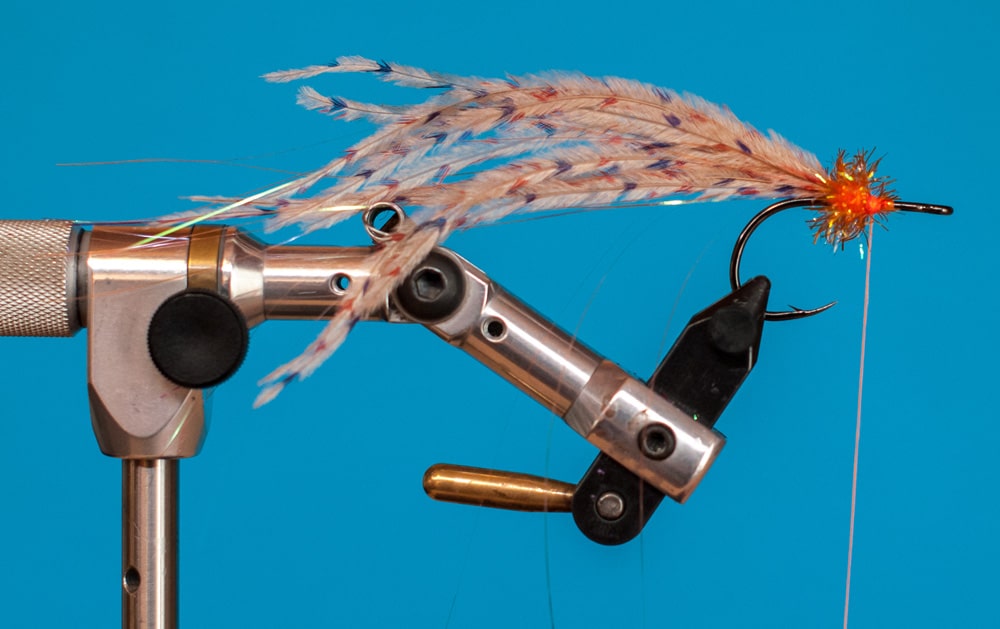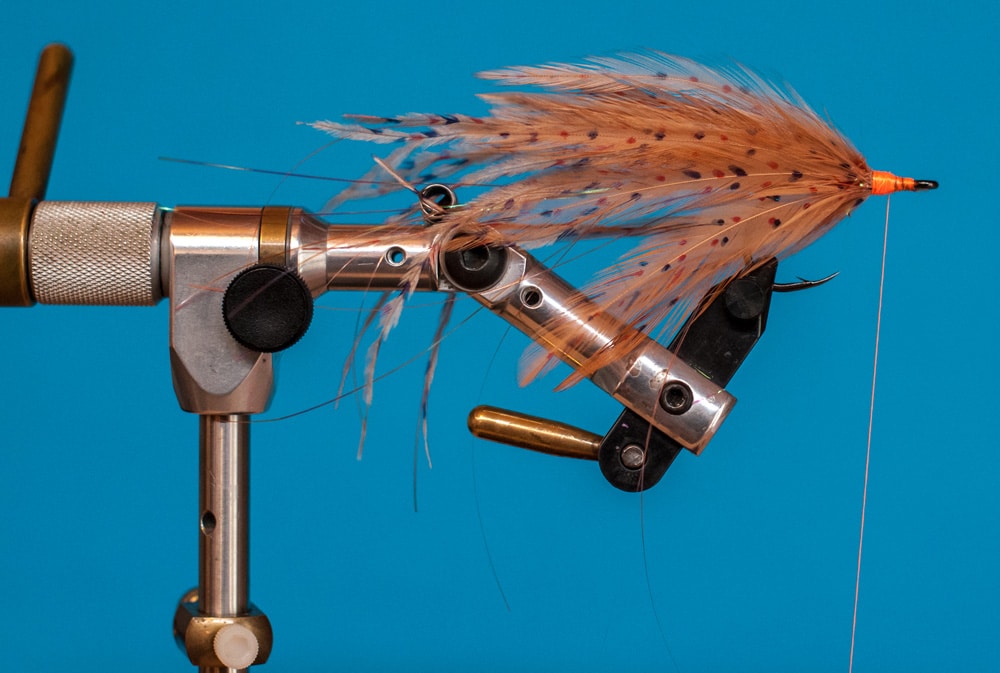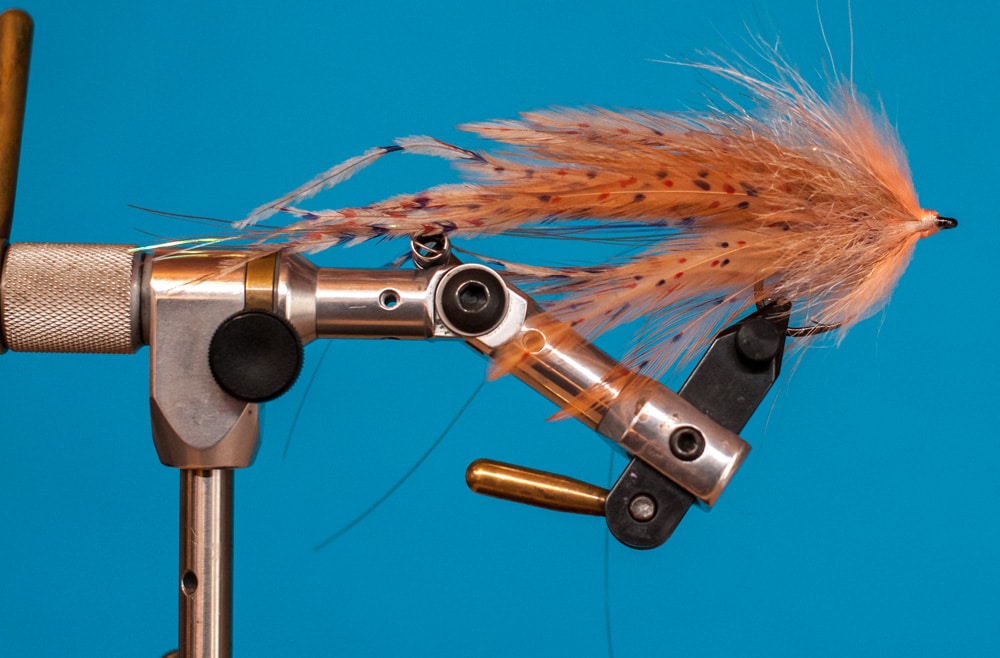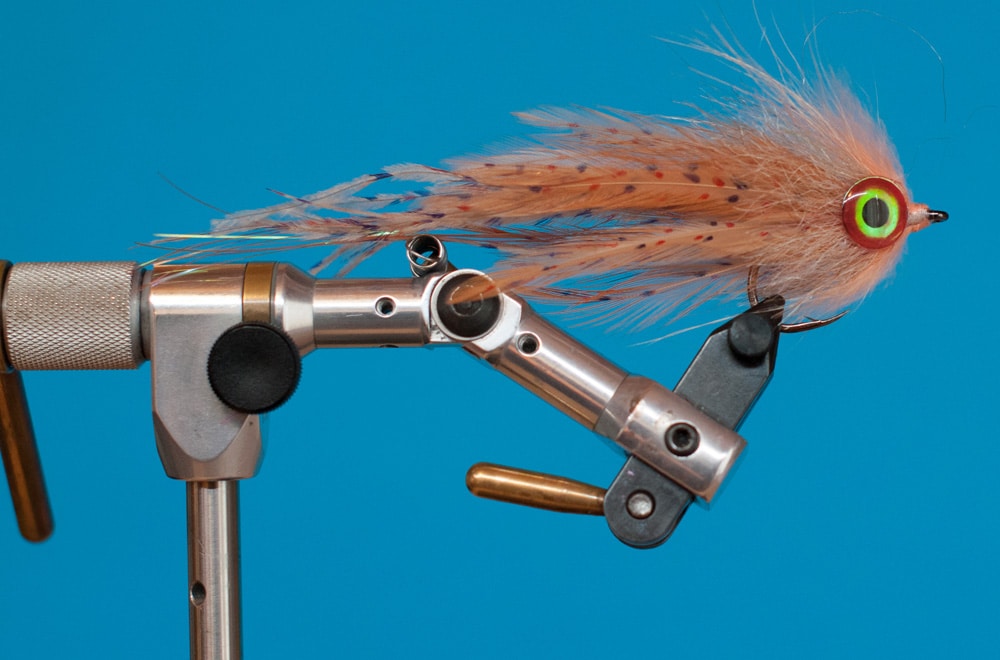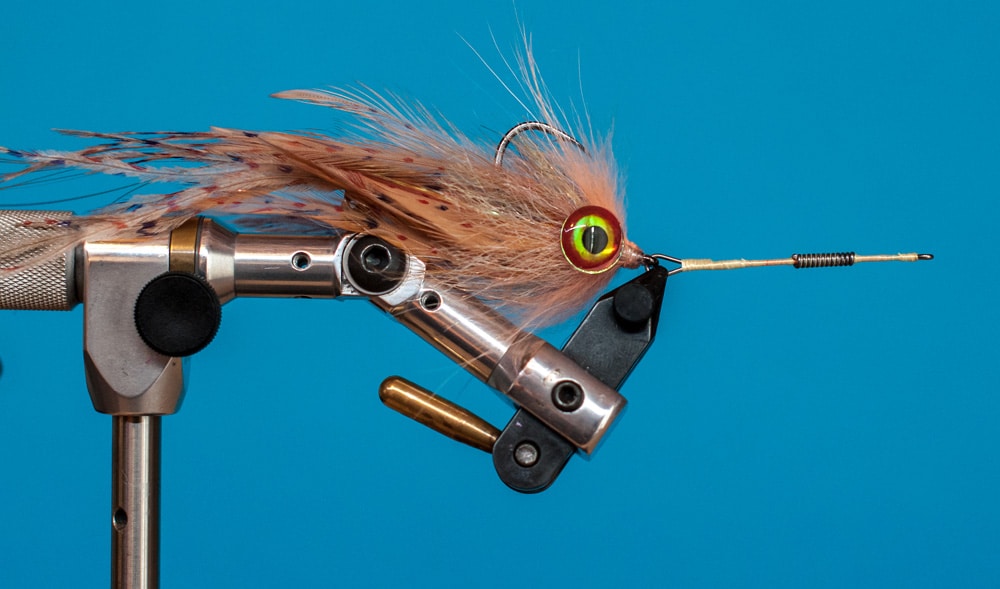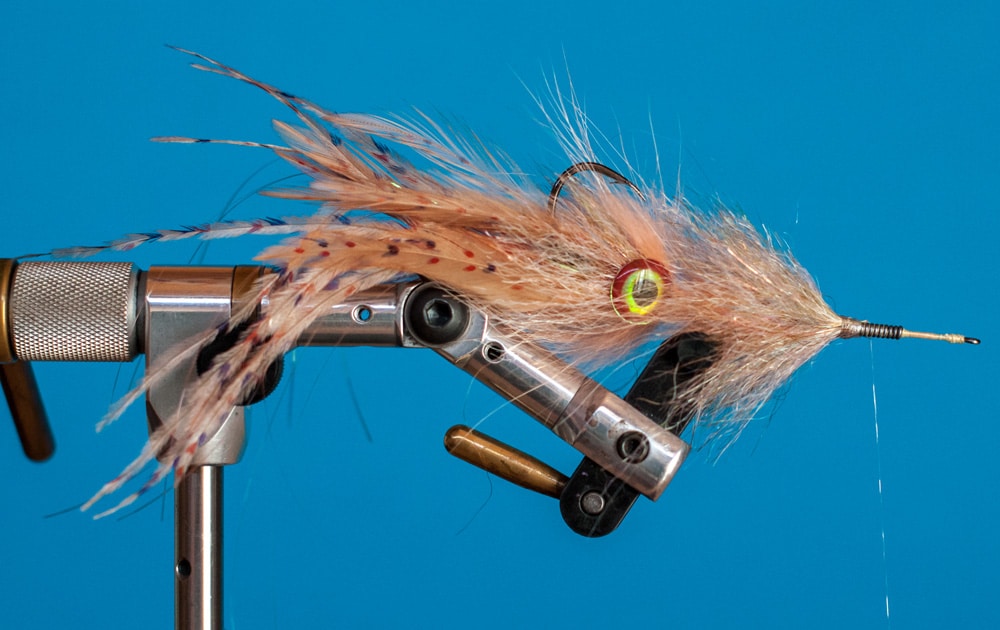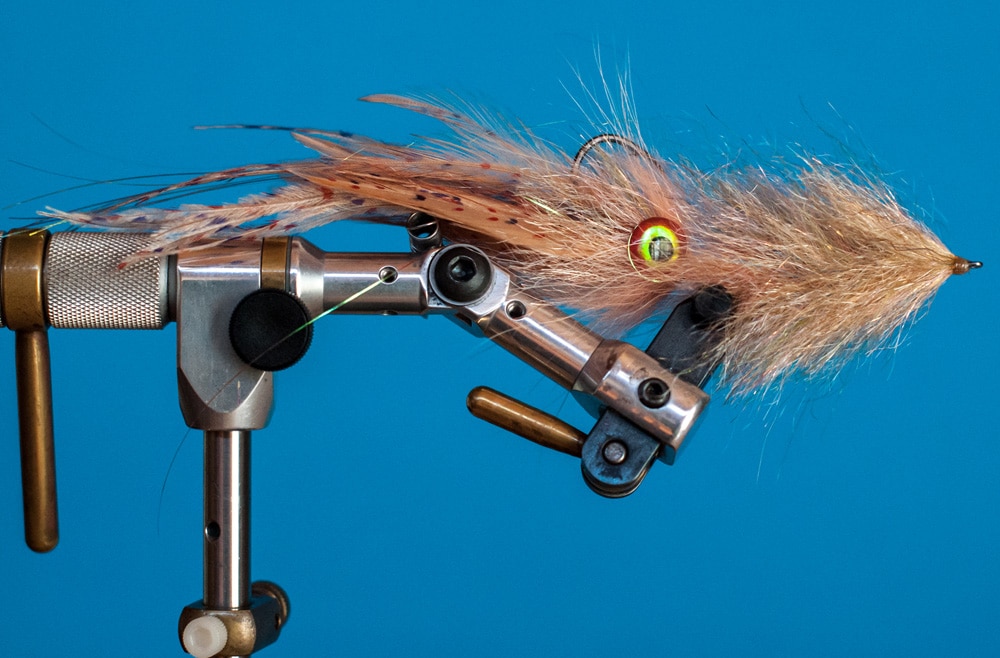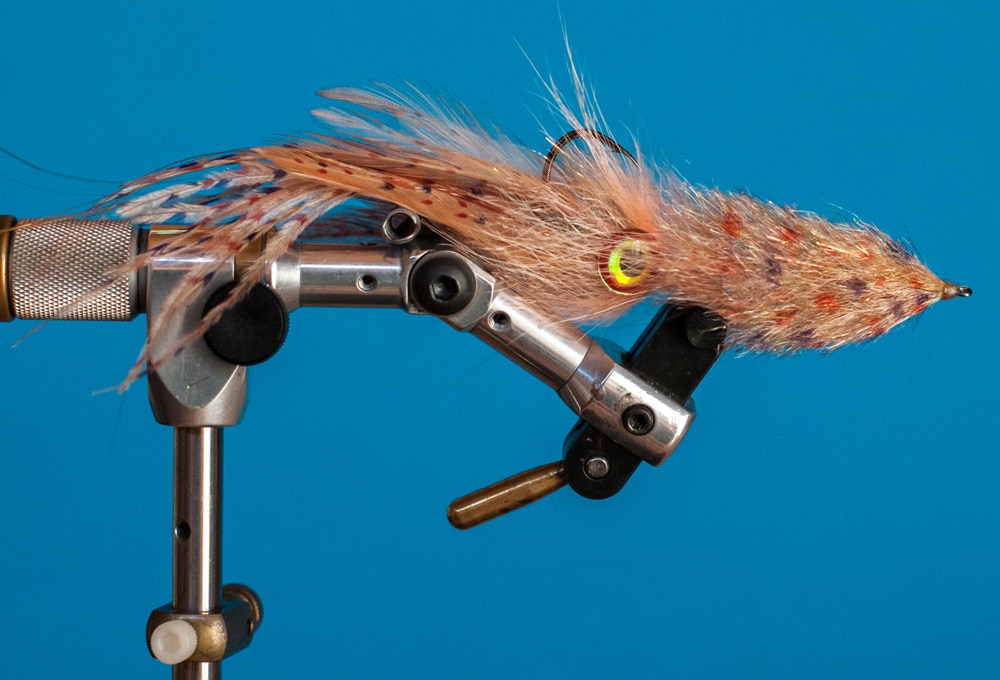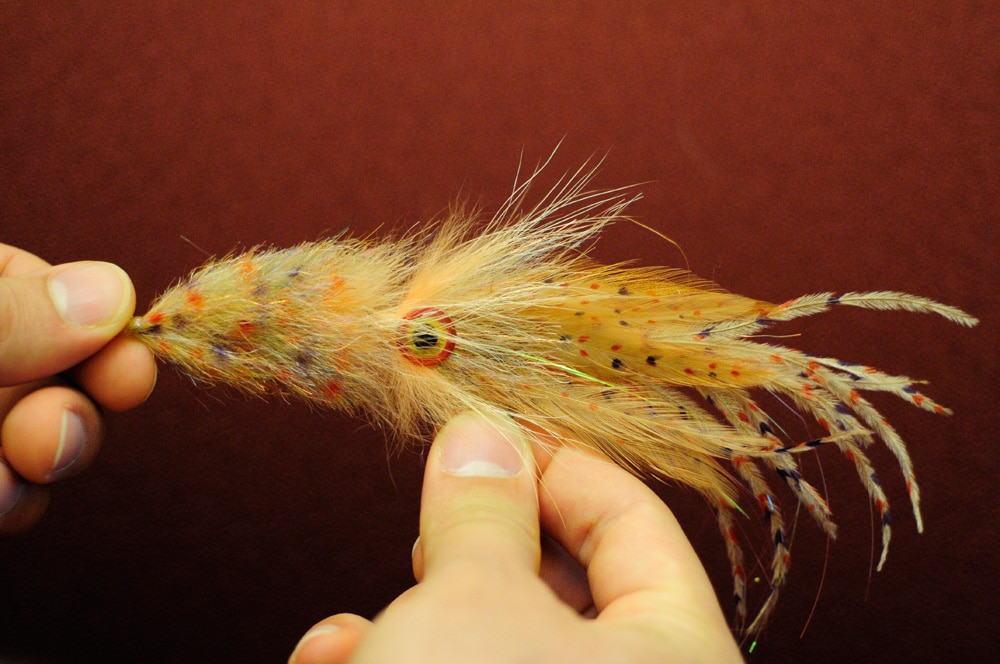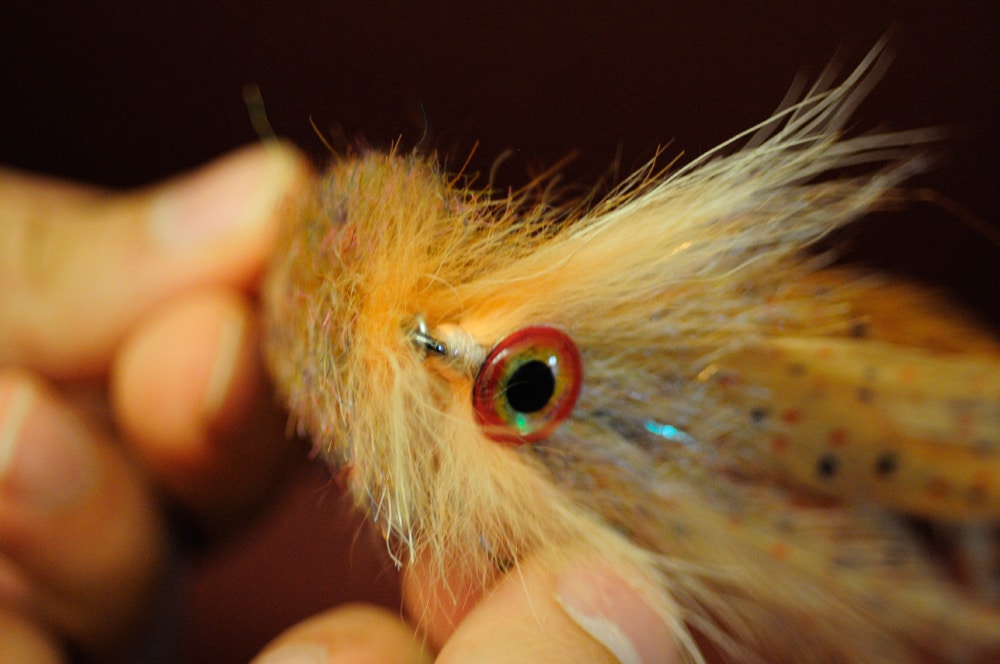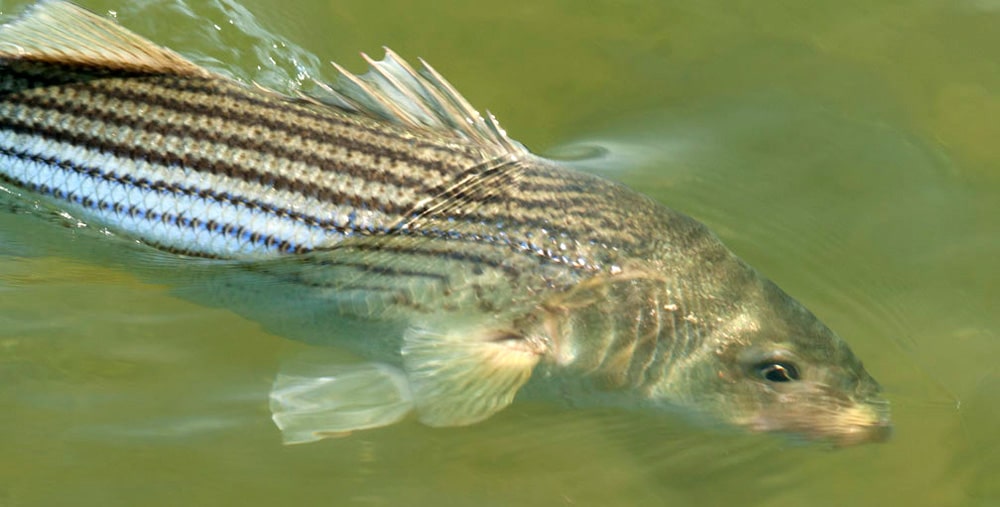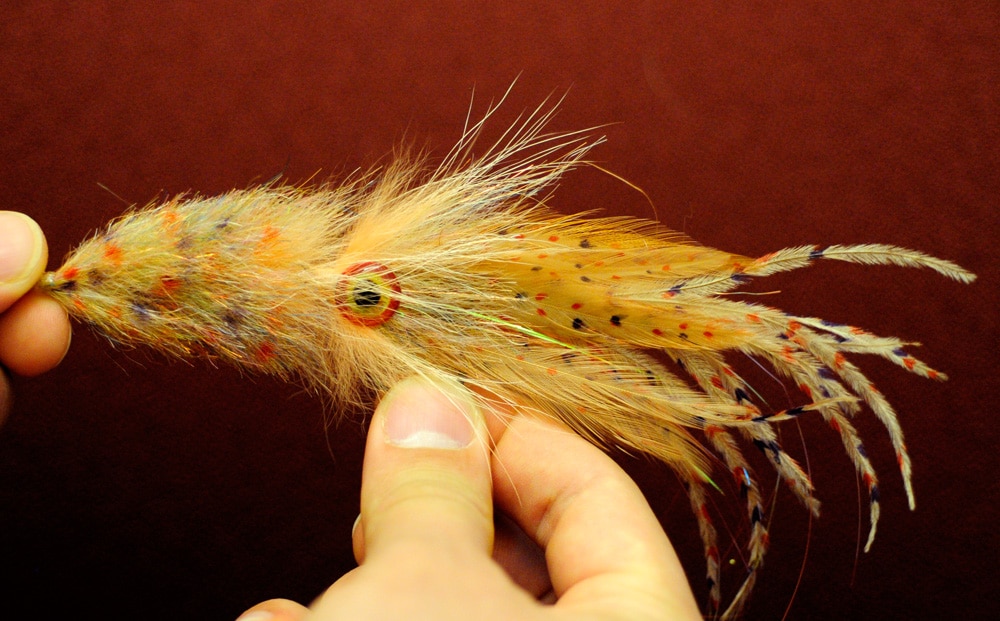
squid fly main
Above, step by step instruction and photos explaining how to tie the Q Calamari fly.
Squid are amazing and unique creatures. These brilliantly colored, carnivorous marine cephalopods can be found in all the world’s oceans and are a popular food source for many marine predators. Squid are highly developed invertebrates that often are found in large schools floating up to the surface at night to feed and hunt smaller baitfish. They are luminescent, can change colors when they get agitated and propel through the water like miniature helicopters with dart-like movements.
Squid are even classified as a mollusk. Growing up in an Italian family, squid was a common delicacy during the holidays. Breaded calamari in marinara sauce over pasta is still one of my all time favorites. It was interesting to discover the clear pencil-like membrane while cleaning squid. That membrane is what distinguishes the squid as a mollusk. It is just another strange characteristic of these bizarre marine creatures.
I remember back in the mid-nineties, seeing large schools of 10- to 12-inch squid exploding under birds along the Wasque rip on Martha’s Vineyard. The squid were being chased out of the water by striped bass in the 20- to 40-pound class. They would change appearance from orange to tan to purple as they propelled themselves into the air, discharging their ink as a last effort to evade their predators. It was truly a sight to behold and forever etched into my brain. We were using 10-inch long, orange bucktail deceivers back then on sinking lines, and the bass ate them like candy corn.
There have been so many amazing, realistic representations of squid flies over the years, especially with the coming of many new synthetic materials. Squid flies have been tied in all shapes, colors and sizes by innovative fly tiers such as Bob Popovics, Johnny King and Steve Cali to mention a few. The Q Calamari is just another squid interpretation tied on the new articulated shanks by The Flymen Fishing Company. They are the same company that makes FishSkulls.
What I like about these articulated shanks is that the design makes it very easy to extend the length of your flies. By securing the shank over the eye of a hook of choice, these articulated shanks allow the rear hook to swing freely. Creating a more life-like movement in the water, similar in action to a broken back plug cast on spinning tackle. Weighting the shanks with lead wraps can also allow for various sink rates and action when stripped. I like to fish these squid flies using a loop knot with a six foot leader of straight 20-pound fluorocarbon attached to my sinking line. In California, calico bass, yellowtail and white sea bass can all be targeted on squid flies fished along the inshore kelp forests found dotted along the coast.
Prior to the Flymen’s articulated shanks, we used to extend the length our big flies or squids by using wire or heavy mono and attaching it directly to the hook. Here’s a tip: If you plan on fishing these new articulated shanks for bluefin tuna or pelagics over 30 pounds, I recommend soldering the shank closed after you attach it to your rear hook to ensure it never opens up under heavy lifting. I would also recommend keeping a few of these Calamari flies with you at all times, especially if you find yourself inshore or offshore, on either coast.
Materials:
Hook: Mustad 4/0 Tarpon or Tiemco 2/0 600SP
Thread: Danville Clear Mono Fine, & Kevlar.
Tentacles: 6-8 tan ostrich herls, orange flashabou, 10 tan strung Chinese saddle hackles, orange chenille
Head: Synthetic Artic Fox Zonker Hair 16 (salmon), Blended SF redfish, SF rainbow, tan & white wig hair (kinky fiber can be substituted for wig hair)
Eyes: Clear Cure 1/2 inch Solar Flare, goop
Body: Flymen’s Articulated Shank, (55mm-2 1/8 inch), Artic Fox Zonker Hair 16 (salmon), Custom calamari blend: SF redfish, SF rainbow, tan & white wig hair.
Weight: 8 – 12 wraps of heavy lead wire about 1/2 inch from eye of hook.
Finish: Tuffleye or epoxy
